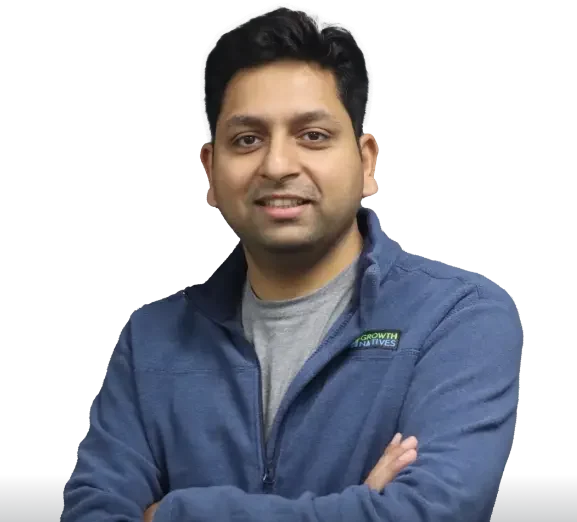Immersive Technologies: A Deep Dive Into Augmented Reality and Virtual Reality

Published on: November 17, 2023
Updated on: July 12, 2024
1091 Views
- Development
10 min read
We're all pretty glued to our screens nowadays, aren't we? Be it our computers, smartphones, or televisions, these screens are our windows to news, social media, movies, and much more. But now, with Virtual Reality (VR) and Augmented Reality (AR), we're not just passive consumers of digital content; we're stepping into a new era of interactive experiences.
Picture this: With a virtual reality headset, you can dive into a computer-generated underwater world and swim with the fish. But if you're using AR, you could see those same fish swim around your living room through a clear visor or smartphone. Mind-blowing, right?
As of 2023, the U.S. has 65.9 million VR users and 110.1 million AR users. Globally, there are approximately 171 million VR users [1]. Clearly, both these are changing how we use and interact with technology. Let's dive deeper into Virtual Reality and Augmented Reality, explain critical differences, and explain how they can be a game-changer for businesses.
What is Augmented Reality?
Augmented Reality (AR) overlays digital information and images onto the real-world environment. AR enhances the perception of reality by supplementing what you see, hear, feel, etc, with computer-generated sensory inputs like graphics, GPS data, audio, and video.
AR uses transparent displays or devices like smartphones to overlay the digital content into your actual surroundings in real time. As you move and interact with the physical environment, the AR elements remain anchored and perspective-correct.
Some examples of AR experiences include:
- Looking at a city street through your smartphone camera and having restaurant names, reviews, and directions appear over the real-time view.
- Wearing an AR headset that adds 3D graphics and animations into your field of vision as you move around.
- Using face filters and effects on social media apps that track facial features and overlay virtual masks, makeup, hats, etc.
Various applications harness AR for multiple purposes—from translating text via a camera and identifying celestial bodies to envisioning how different plants might look in a garden. Many people have experienced AR in casual settings, perhaps unknowingly, through games like Pokémon Go or social media filters on platforms like Snapchat.
Top 3 Pros and Cons of Augmented Reality
Augmented Reality offers many potential benefits but also has some limitations to consider. Let's explore the top three pros and cons of AR.
Advantages of Augmented Reality
1. Enhanced Experiences
AR can provide enhanced experiences by overlaying contextual information onto real objects and locations. For example, you could point your phone at a building to view additional details or use AR navigation apps with direction arrows overlaid on the street. This creates a richer, more informative view of the world.
2. Ease of Use
For mobile users, AR is straightforward to use—point your camera at something, and extra information pops up on the screen. It makes accessing data quick and easy. AR allows you to visualize how products fit into real spaces when shopping.
3. Supports Business Activities
AR can transform construction, design, manufacturing, and retail business practices. It enables visualization of final products, finds building damage, tests prototypes digitally, and lets customers visualize items in their homes before purchase.
Disadvantages of Augmented Reality
1. Expensive to Create
Developing AR experiences requires significant investments in programming skills and technology. The costs put AR out of reach for many smaller businesses and organizations.
2. Privacy and Security Concerns
The difficulty of discerning AR from Reality raises concerns about trickery or manipulation. Security experts also warn that AR devices are vulnerable to cyber-attacks and hacking.
3. Addiction and Accidents
As with any technology, overuse can lead to addiction. AR poses risks like distracted driving/walking and on-the-job accidents when users become overly focused on virtual elements.
Applications of Augmented Reality
AR opens up new possibilities for brands to interact with consumers in memorable ways that add value. From try-ons to virtual assistance, AR can help brands boost sales, improve customer experience, and stay at the cutting edge. Here are five key applications of AR:
1. Virtual Try-Ons
AR allows customers to digitally try on products like makeup, clothes, and accessories before buying, reducing the need for physical inventory while giving customers more flexibility to test options.
2. Interactive Brand Experiences
Brands can create AR tours, manuals, and assistants that interactively display information when customers scan objects or locations. This brings static things to life with dynamic virtual content.
3. Enhanced Branding Materials
Printed brochures, business cards, etc., can integrate AR elements like videos and CTAs that pop up when scanned, increasing engagement.
4. Buzz Marketing Campaigns
Unique AR experiences, like an interactive bus stop ad, can generate buzz and engagement for brands by providing fun, shareable interactive moments.
5. Smoother B2B Sales
For B2B companies, AR allows customized product visualization, design collaboration, and interactive support to improve customer experience and vendor capabilities.
What is Virtual Reality?
Virtual Reality (VR) is a computer-generated virtual environment that allows users to immerse themselves in the simulated world. VR uses headsets, controllers, and sensors to create an interactive, multi-sensory experience where users can explore and interact with the virtual environment.
Unlike traditional screens that show images, VR places users directly into the digital realm in a vivid, life-like way. The key aspects of virtual Reality include:
- Immersive 3D environments that surround the user in the virtual space.
- The ability to look around and explore the simulated world in all directions, just like in real life.
- Interactivity that allows users to engage with virtual objects and characters.
- Real-time responsiveness to user movements and actions.
There are different types of VR systems with varying levels of immersion:
- Non-immersive VR displays 3D environments on a screen that users navigate from the outside.
- Fully immersive VR uses headsets and sensors for complete realism inside the virtual world.
- Semi-immersive VR provides 3D virtual environments using screens or basic headsets with limited interactions.
- Multiplayer VR allows multiple users to explore the same virtual space together cooperatively.
Top 3 Pros and Cons of Virtual Reality
Virtual Reality can provide unique simulated experiences and useful applications but may carry risks if overused as a substitute for real-life interactions and situations. Here are the top three advantages and disadvantages of virtual Reality
Pros of Virtual Reality
- Better than Reality: VR can create hyper-realistic environments that are more vivid and detailed than the real world. This allows for immersive simulated experiences like space travel or fantasy worlds that go beyond what's possible in Reality.
- Used in Various Fields: VR has utility across sectors like military, medical, education, engineering, and gaming. Applications include surgical training, virtual tours, architecture visualization, PTSD treatment, flight simulation, and interactive gaming.
- Excellent User Experiences: By stimulating multiple senses like vision, sound, and touch, VR can provide highly engaging and exciting experiences that fully immerse users in virtual environments. This creates an unparalleled sense of presence.
Cons of Virtual Reality
- High cost: The VR equipment required, like high-end computers, headsets, motion sensors, and haptic systems, can be very expensive to purchase and develop content for. This limits widespread consumer access.
- VR Addiction: The immersive worlds of VR can sometimes be so alluring and gratifying that people become addicted and detached from real life. Overuse may exacerbate mental health issues or replace real relationships.
- Unproven Technology: While the hype is high, VR still has some technical limitations, and its psychological/social effects aren't fully understood. More research is needed to standardize VR for safe, extended use.
Applications of VR
Here are some of the major use cases and applications for virtual Reality (VR) technology:
- Training Simulations: VR creates highly realistic environments well-suited for occupational training across fields like medicine, aviation, combat, architecture, and more. Simulations allow trainees to practice skills and procedures in safe, controlled settings.
- Virtual Events: Host interactive virtual events, conferences, or meetings inside stunning VR spaces. Attendees can network, view presentations, and explore exhibitor areas.
- Visualization: Architects, engineers, and designers use VR technology to visualize buildings, products, and other creations in an immersive 3D environment before constructing them. This helps test concepts at scale.
For example, marketers can allow potential customers to view and interact with a 3D virtual representation of a product to evaluate it before purchasing, virtual car showrooms, for instance.
- Healthcare: Doctors are adopting VR for medical visualization, surgery simulation, therapy, phobia treatment, and teaching anatomy. VR allows risk-free practice and can calm patients during procedures.
- Social Interaction: Virtual worlds like Metaverse allow users to interact through customizable avatars. VR facilitates new means of social connection. Multiplayer VR games also connect users.
Virtual Reality vs Augmented Reality
VR and AR are two emerging technologies transforming our interaction with digital content. While related, they have distinct approaches and use cases. Here’s a head-to-head comparison:
| Category | Virtual Reality | Augmented Reality |
|---|---|---|
| Definition | Fully simulated digital environments | Overlaying digital content on real-world |
| Hardware | Headset, controllers | See-through glasses/lenses, smartphone |
| Immersion | Fully immersive | Partially immersive |
| Environments | Entirely virtual | Real-world with digital overlay |
| Interaction | Can interact with virtual objects, characters | Limited interaction with overlays |
| Senses | Primarily visual and auditory | Visual, auditory, haptic, etc |
| Use cases | Gaming, training, simulations | Navigation, marketing, education |
| Content | 3D computer generated | Digital images, video, graphics |
| Motion tracking | Full tracking with headset and sensors | Partial phone or sensor tracking |
| Examples | Oculus Rift, HTC Vive | Google Glass, Pokémon Go |
AR and VR each have unique strengths that provide a spectrum of opportunities for companies to boost engagement, capabilities, and competitiveness through next-gen interactive technology. A dual AR/VR strategy could be a winning one for businesses. Here's how:
- Better Customer Engagement: AR and VR provide new, interactive mediums to connect with customers in novel ways that build more robust engagement and interest.
- Immersive Product Experiences: AR allows customers to visualize products in their actual environments, while VR gives complete digital immersion to try before buying.
- Flexible Training Options: VR training simulations and AR-assisted workflows support customers and employees through more engaging learning.
- Broader Marketing Reach: VR and AR content is highly shareable on social media, providing viral marketing potential. AR, in particular, makes marketing material more interactive.
- Data Visualization: VR can transform company data into immersive 3D representations for more intuitive analysis, while AR overlays key metrics.
- Expanded eCommerce Capabilities: AR retail catalogs and virtual product configuration tools reduce returns and enhance buying confidence.
- Remote Collaboration: AR and VR can help dispersed teams collaborate more intuitively through immersive virtual workspaces and augmented remote assistance.
- Future-proof Businesses: Adopting AR and VR prepares companies for the next evolution of interactive consumer experiences and employee workflows.
The Future of AR and VR
Recent years have seen exciting new developments in AR and VR technologies. As hardware, software, and innovative applications advance, several key trends are shaping the future of AR and VR:
- Mixed Reality - Mixed Reality combines elements of both AR and VR to create interactive virtual objects and environments blended into the real world. This provides greater immersion than AR alone.
- Haptic Feedback - Through haptic technology, users can feel and interact with virtual objects as if they were real. Tactile feedback enhances realism.
- Eye Tracking - Eye tracking allows users to control AR/VR devices and experiences simply by moving their eyes for more intuitive interaction.
- 5G Connectivity - The low latency and fast speeds of new 5G data networks will facilitate complex AR/VR experiences requiring rapid data transfer.
- Spatial Audio - Three-dimensional spatial audio will make virtual environments more life-like by simulating sounds placed realistically around users.
Additionally, artificial intelligence is significantly improving AR/VR tracking, interactions, and realism. As hardware, connectivity, AI, and creative software advance, more immersive and interactive augmented and virtual worlds will become commonplace sooner than we realize. The future of AR/VR looks bright, and that’s why the time to invest in them is now.
Want to Leverage AR & VR Just Right? Talk to Us!
Team Growth Natives would love to pitch in. Reach out to us at info@growthnatives.com and we’ll get back to you.
Statistics Reference:
[1] https://www.zippia.com/advice/virtual-reality-statistics/
Frequently Asked Questions
Virtual reality (VR) immerses users in a completely virtual environment, while augmented reality (AR) overlays digital content onto the real world.
Augmented reality uses cameras and sensors in devices like smartphones or AR glasses to detect real-world objects and overlay digital information or visuals onto them.
AR features include real-time interaction with digital content, integration of virtual objects into real-world environments, spatial recognition, and context awareness.
The three types of augmented reality are marker-based AR, markerless AR, and projection-based AR.



